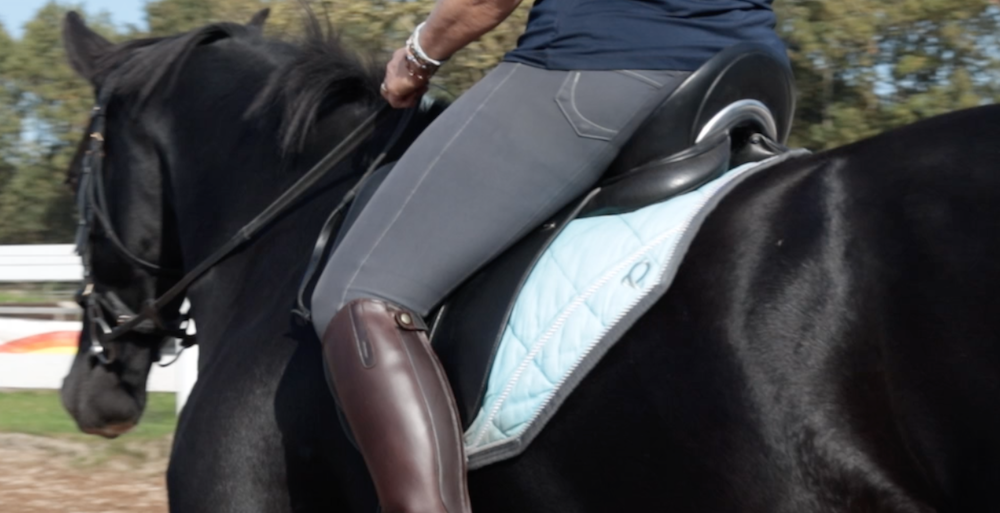6 Tips for more Freedom of Movement under saddle

Freedom of movement, without constraints or compensations, is the most important factor to guarantee a life free of injuries for your riding horse, but … it’s also the easiest thing to destroy, even without meaning to. Here are some tips to improve your horse’s freedom of movement under saddle by making changes to your own biomechanics.
2 Tips for the walk
If you want your horse to walk freely and almost not notice you, you’ll probably need to move more than you would expect. A static seat and posture actually gets in your horse’s way!
Relax your pelvis and thighs and make sure your calves softly stay in touch with his belly all the time. Allow your legs to be moved by the horse while keeping your seat and upper body stabilised. You’ll feel his barrel roll to the left and to the right, lifting your legs up and out one by one. In this way your legs stay silently in one place for the horse in stead of dangling around.
Relax your shoulders, elbows and wrists. The neck of your horse shortens and extends with every step. Allow this movement of the horse to take your lower arm forward and then allow your elbow to fall back in place every step. Your shoulder- and elbowjoint will move with every step, while your wrists and hands stay soft. By allowing your horse to move your arm in accordance with his head- and neck movement, your hands will feel soft for the horse and the rein pressure will stay the same throughout the movement.
2 Tips for the sitting trot
Sitting trot is quite a challenge for many riders. More than often it leads to holding your breath, bracing against the movement or bumping uncomfortably in the saddle. This leads to lack of clarity in your aids, whether that be the aids with your breathing, your seat or your legs. Let alone the reins! Your horse will answer with tension and bracing his back, thus losing his freedom of movement. So what can you do to “get out of his way”?
To begin with, te best moment to start sitting trot, is when your horse already can be calm, rhythmic and relaxed through his back. If he is still very crooked or on the forehand your chances for a comfortable sitting trot are not very high. So first focus on finding a ‘sweet spot’ while still riding a rising trot. You can test how sitting trot feels but if it feels awkward or when your horse braces the instant you try, go to rising trot again.
Sitting trot takes fitness of the rider too. You’ll need some core stability and coordination too, so start simple and build up gradually. Start with only 2 steps, then rising trot again, then 3 steps, 4, 5 …. al the way up to 20. If you get stuck after – for example – 8 steps, then repeat these 8 steps untill it feels better. Only then go for more. In the meantime, while playing this game, you can experiment with small adljustments in your posture or breathing to find your “sweet spot” for sitting the trot.
2 Tips for the canter
The most important thing is not getting in the way of the upward movement towards the moment of suspension, when all 4 feet of your horse are in the air. If you lean back on your tailbone or push into the saddle you’ll block this upward motion, causing the strides to get choppier and shorter and less expressive. So rise up with the horse. Envision you have velcro under your pants, pulling your horse’s back upwards with you every stride.
Adjust your breathing to the rhythm of your horse. Your horse breathes in when rising up towards the moment of suspension and breathes out when moving downward. When you can synchronise with this for a while you’ll feel your horse’s cadence improve! This takes some exercise because this goes fast and we do not want you to hyperventilate! So another easier way is by example to breath in for two strides and breathe out for 2 strides. This already can change the way your horse canters.
Let’s find harmony in motion!
L*
